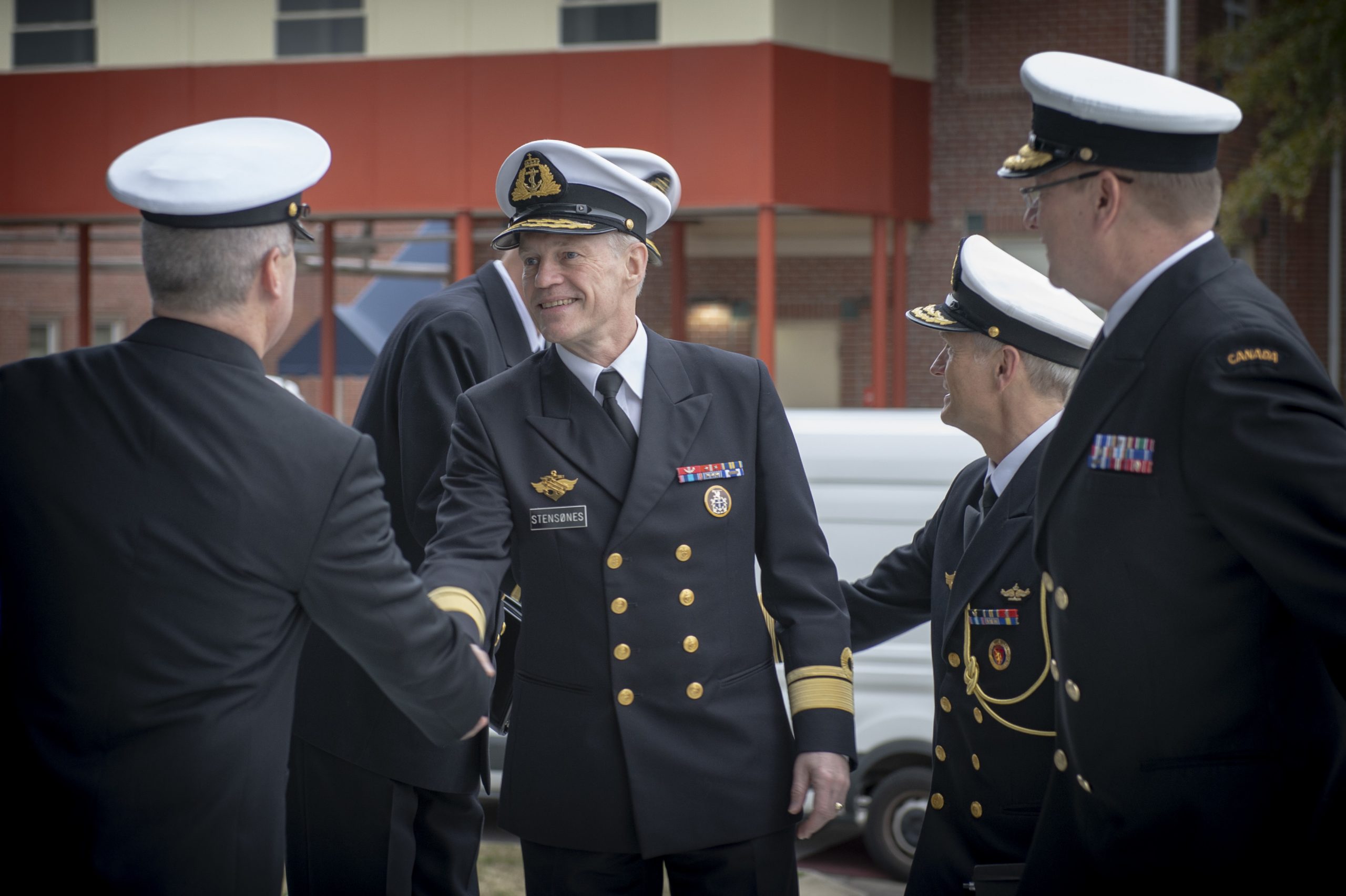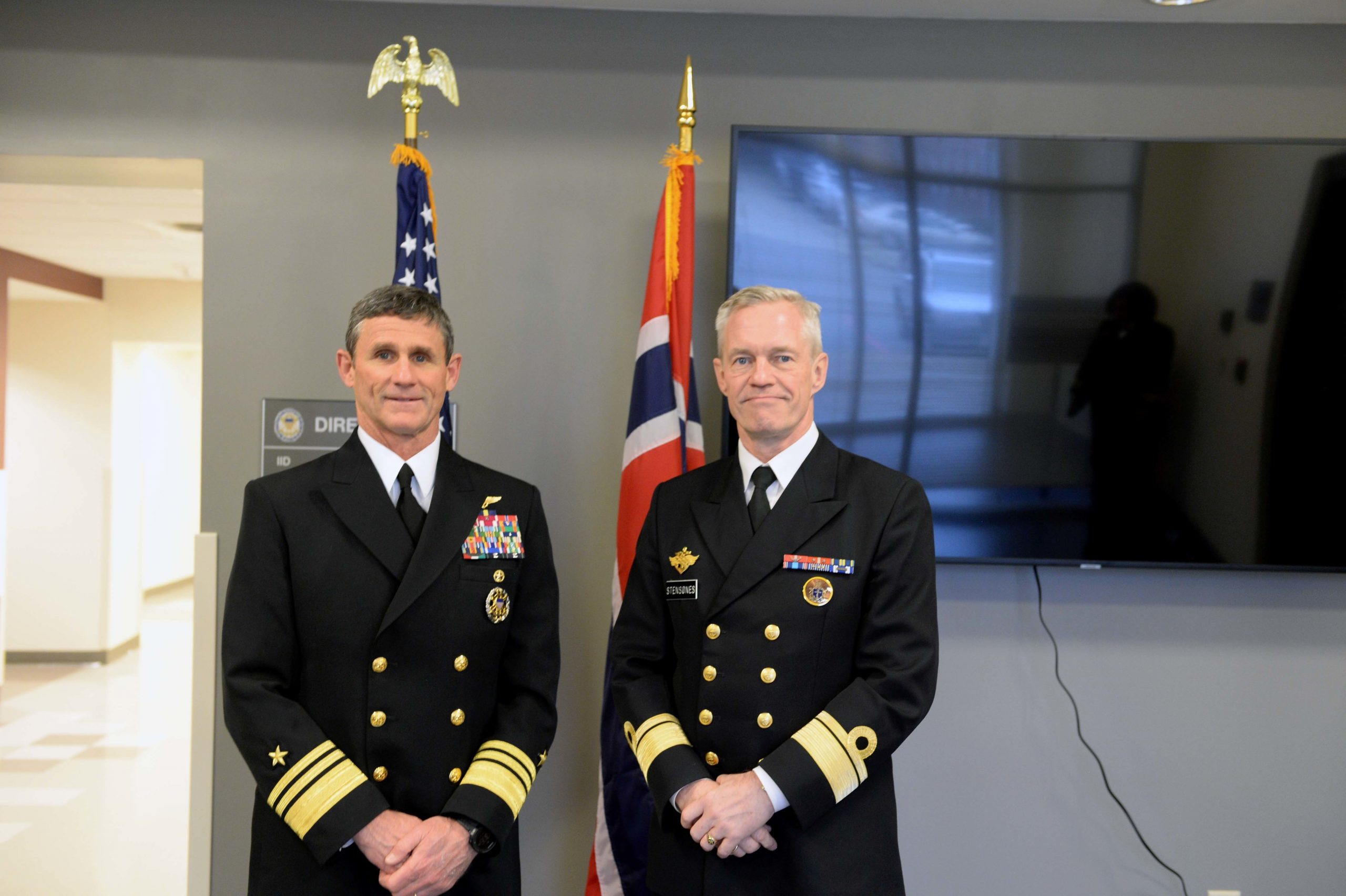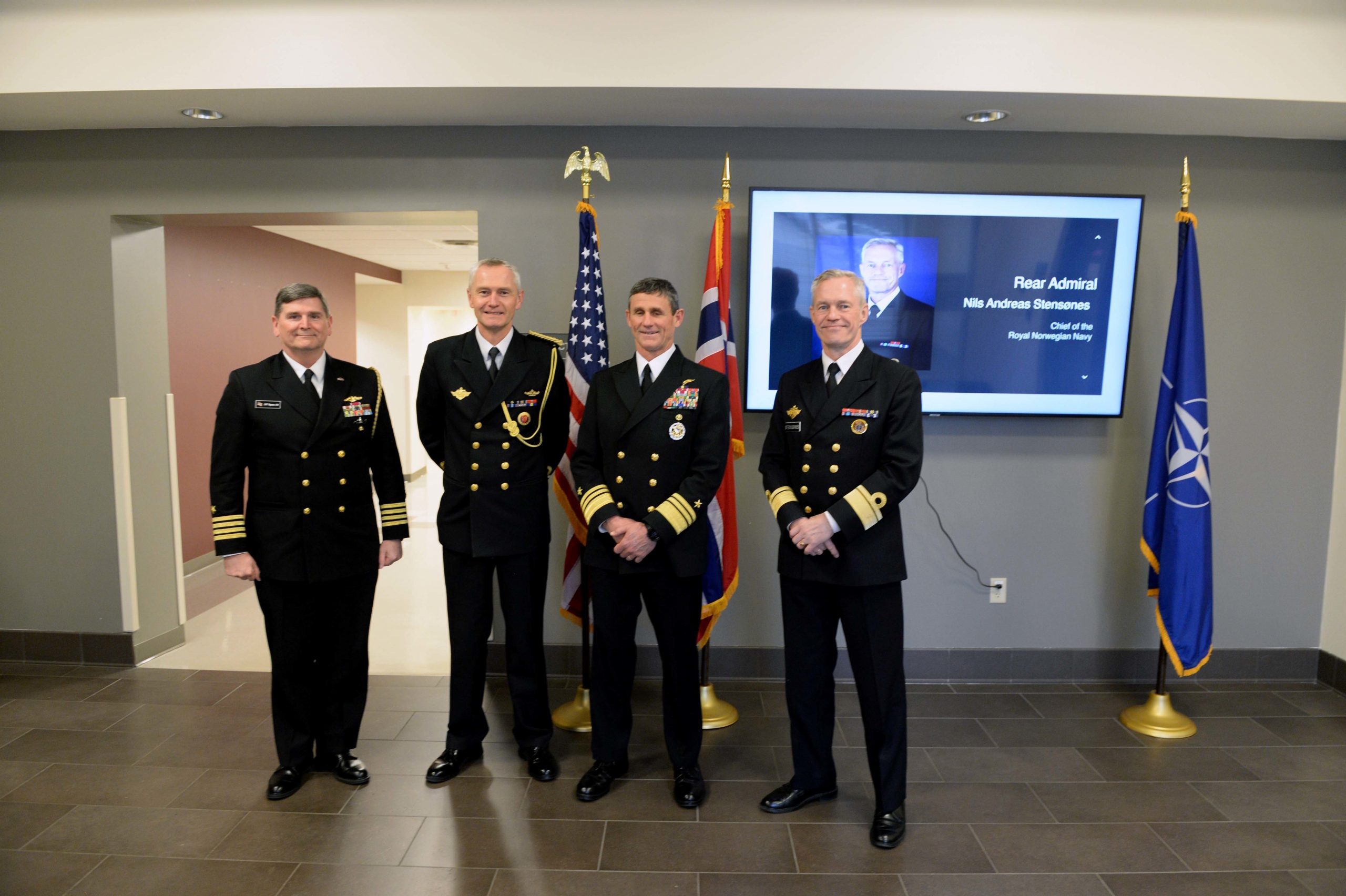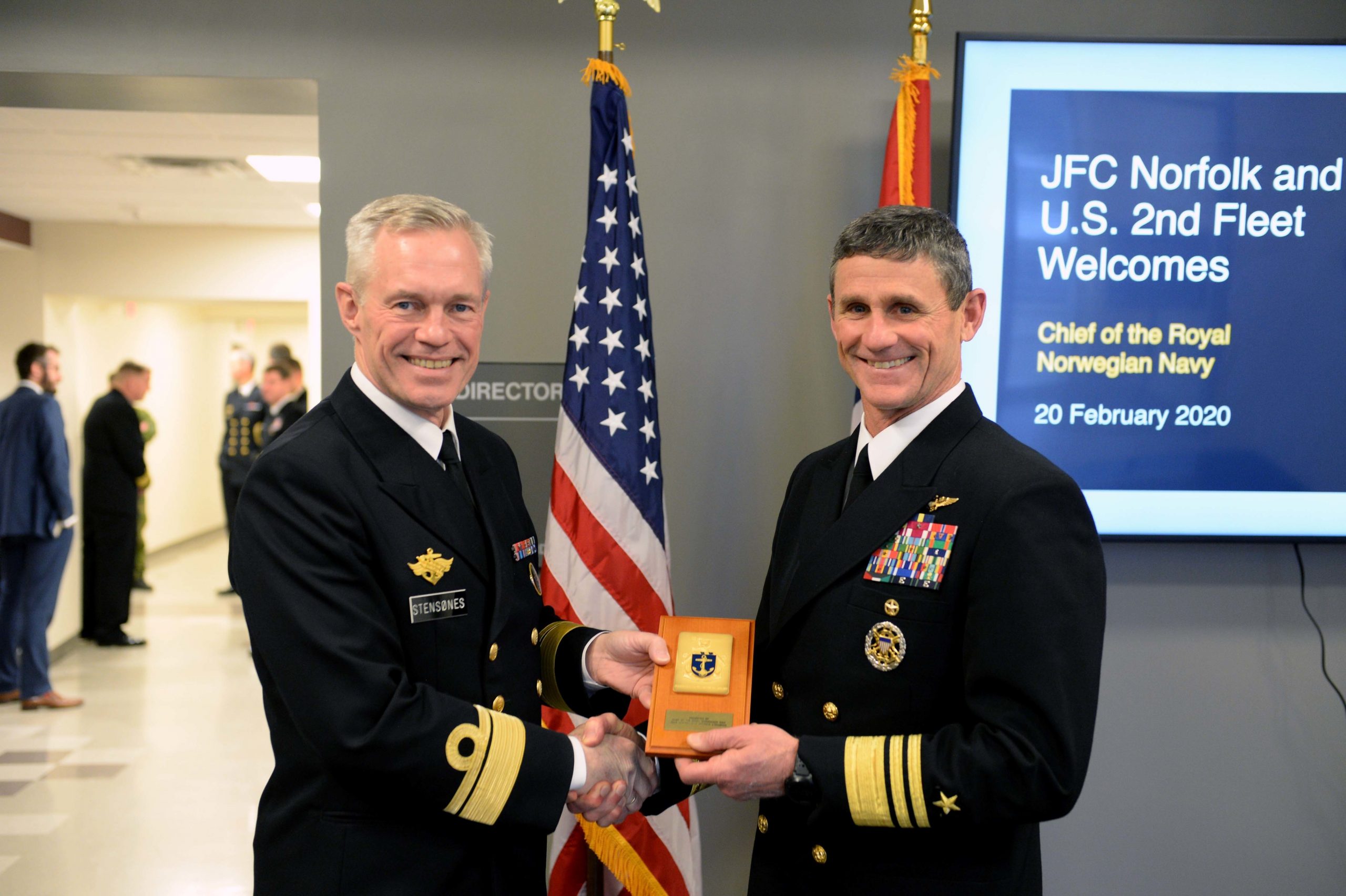By Robbin Laird and Ed Timperlake
The standup of C2F and Allied JFC Norfolk has occurred as allies are significantly reworking their approaches to deterrence and warfighting in the North Atlantic at the same time. It is the blend of the U.S. efforts with those of the allies which is shaping a 21st century approach to integrated defense in support of Western interests.
While the United States has significant elements of the Western defense forces to bring to bear, allies are key players in reshaping North Atlantic defense as well. This is in terms of force modernization, local knowledge and, certainly, in the case of the Nordics a profound understanding of how both to work with the Russians as well as the need to take them very seriously as an authoritarian threat to their neighborhood.
For the Nordics, the Russians are a very close Naval and Air Force in being. In naval warfare, a “fleet in being” is a naval force that extends a controlling influence without ever leaving port. A “fleet in being” can be part of a sea denial doctrine, but not one of sea control.
During our visit to Norfolk in March 2021, we had a chance to talk with RDML Staale Pedersen, head of Allied JFC Norfolk, Operations.[1] The RADML is an experienced maritime officer who has been in the Norwegian Navy since 1985. He has had one FFG command, with three different ships but with the same crew. He has done eight Stanavforlant/SNMG 1 tours with NATO. Four of these tours included operations, including counter piracy and counter terrorism. Of those four operations, he was CO on two of them. He has extensive experience at the Norwegian Joint HQ as well was head of future operations, submarine operations and ASW. His sea fairing domain knowledge is formidable, and he brings that hard earned experience to play in the efforts of both C2F and JFC Norfolk.
As he put it: “When you look at the Western navies operating in the Atlantic, you see several blue dots on the ocean. Our task is to ensure that those blue dots are aware of what each of them is doing and to bring them into a more integrated operational force.”
He sees this as crucial for deterrence, and if necessary, warfighting to ensure U.S. and Allied integrated balance in the region. For the Norwegians, there is clear concern with the threat of Russian coercion, but also significant understanding that Russia is a neighbor important to work through a number of key shared challenges as well.
This question of balance was put very well in an interview done in 2017 in Norway with the head of security policy in the Norwegian Department of Defence.
As Keith Eikenes, Director, Department for Security Policy and Operations in the Ministry of Defence of Norway, put it:
“Our policy is to engage with Russia where it’s possible, and we do have examples of pragmatic good cooperation that we’ve had historically, and in some areas, that it’s still ongoing. For example, we cooperate on safety incidents at sea, and on fisheries with regard to common management, and cooperation. We also have border guard cooperation, so there are certainly areas where we can have a pragmatic cooperation as well.”
He made this point after underscoring the change which he saw over the past three years, that is from 2014 through 2017. “When I was in Washington, we were primarily focused on out of area operations, counter insurgency and counter terrorism.
Now with the Crimean crisis and the modernization of Russian forces, questions of national defense and protecting the North Atlantic have returned to the fore.
We are seeing a Russia that is becoming less predictable, more assertive about its interests, and also, undergoing a fundamental military in modernization, which makes it far more militarily capable than it was. And indeed, Russia is modernizing more rapidly than many anticipated.
And those new capabilities are being joined to a growing debate about sea control and sea denial strategy.”
The sense of balance suggested by Eikenes profoundly came through in our discussion with the Norwegian Admiral. He saw the standup of the two commands in Norfolk as a crucial step forward in working integration, and in his time there, welcomed the kind of subject expertise resident in C2F being made available to JFC Norfolk. He was focused on JFC Norfolk build up to deliver the kind of integrated force capabilities required for operational deterrence.
In particular, he noted that the Norwegians, the British and the Danes were enhancing national maritime domain awareness operations and saw an very important role for JFC Norfolk in working a more integrated joint surveillance operational approach.
The Admiral was very much focused on concrete effects which current forces can create and developing ways to enhance what extant forces can do together. He saw the standing up of an operational NATO command on U.S. territory as an important contributor to shaping better understanding on the U.S. side of what allies bring specifically to the operational capabilities in Atlantic operations.
“We are focused on joint effectiveness; we are pioneers in this process and the two commands working this is a key driver for the right kind of change.”
We have significant respect for our Nordic colleagues, and in the joint book by Laird and Delaporte, a significant part of the book focuses on their renewed defense efforts since 2014. And we both attended a unique symposium in Copenhagen in 2015 which certainly highlighted one Nordic country’s way ahead with regard to modernization, but clearly in the alliance context.
On April 17, 2015, a joint symposium on the evolution of airpower was co-sponsored by The Sir Richard Williams Foundation (Australia) and the Centre for Military Studies of the Department of Political Science of the University of Copenhagen. Both organizations are partners with Second Line of Defense.
This was an unusual conference given that it launched an Australian effort to broaden the working relationship with non-Asian partners in shaping new approaches to airpower and was, in turn, the beginning of a broader intellectual outreach by the Danish Centre as well.
While 21st Century Technology Training and Tactics were being discussed in Copenhagen, it was important to have a moment of historic humility as well.
Earlier Viking heroic nautical efforts are still being honored with original long boats displayed in a famous Danish museum. Fortunately, because of the nature of cold-water preserving wood the Danes have a brilliant museum paying homage to the undaunted nautical courage of all Nordic countries. The epic Viking heritage begin a thousand years ago. Open Viking “long boats” challenged the North Atlantic and ultimately around to the Mediterranean. To see the exact size of their vessels is amazing in contemplating the courage it took to challenge sea states of the North Atlantic.
Taking a Viking fleet across the North Atlantic to Iceland, Greenland and ultimately North America was a legendary and courageous naval endeavor. And today the geography of the ocean that Vikings crossed is still of huge strategic importance. Fast forward to the 21st Century and make no mistake 2nd Fleet commanders know the importance of the geography of their area of operations in protecting strategic sea commerce both east west and with the opening of Artic passages, north and south.
In short, the Nordics have much to contribute to better U.S. understanding of the evolving challenges from the High North and the expanded Atlantic defense geography.
Featured photo: NORFOLK (Feb. 20, 2020) Vice Adm. Andrew Lewis, Commander, U.S. Second Fleet, met with Rear Adm. Nils Andreas Stensønes, Chief of the Royal Norwegian Navy, during a visit to Norfolk, Feb. 20. U.S. 2nd Fleet’s mission is to develop and employ maritime forces across multiple domains in the Atlantic and Arctic in order to ensure access, deter aggression and defend U.S., allied and partner interests.(U.S. Navy photo by Mass Communication Specialist 2nd Class Joshua M. Tolber
This story was published by C2F on February 21, 2020 with regard to the visit of a senior Norwegian delegation to the fleet:
A Norwegian delegation of military officers, led by Rear Adm. Nils Andreas Stensønes, Chief of the Royal Norwegian Navy, held a key-leader engagement with U.S. 2nd Fleet and Joint Force Command Norfolk leaders aboard Naval Support Activity Hampton Roads, Feb. 20, 2020.
The Norwegian delegation participated in bilateral multilevel discussions with Vice Adm. Andrew Lewis, Commander Joint Force Command Norfolk and U.S. 2nd Fleet, as well Rear Adm. Andrew Betton, Deputy Commander, Joint Force Command Norfolk and Rear Adm. Steve Waddell, Vice Commander, U.S. 2nd Fleet, to discuss areas for cooperation as the two navies continue to enhance integration and cooperation.
“Our relationship with Norway is critical to naval operations,” said Lewis. “Norway is a key maritime partner and by working together, we will surely improve maritime security and prosperity while strengthening the relationship between our navies. Our meeting today provided an important opportunity for us to solidify our foundation and align our focus on shared interests in support of a stable maritime environment.”
International partnerships run deep within the makeup of 2nd Fleet. As the U.S. Navy’s newest Fleet, 2nd Fleet leverages the diversity of thought that comes with the integration of allies and partners.
These partners not only serve in an advisory role, they integrate into senior-staff level positions. Currently, 2nd Fleet has officers from Canada, France, the United Kingdom, and Norway, holding positions as fleet planners, logisticians, and operators.
“Having perspectives from other nations is invaluable and provides immeasurable insight and expertise,” said Lewis. “With them, they bring knowledge from their own naval experiences, and they help bridge the gaps in our own understanding while strengthening the relationships that are central to mission accomplishment.”
C2F exercises operational and administrative authorities over assigned ships, aircraft, and landing forces on the East Coast and the Atlantic. When directed, C2F conducts exercises and operations within the U.S. European Command AOR as an expeditionary fleet, providing NAVEUR an additional maneuver arm to operate forces dynamically in theater.
[1] In U.S terms, he is a one-star Admiral but in Norway as in the UK, he is identified as Commodore (CDRE).
Editor’s Note: Below is the briefing which Ed Timperlake gave to the Copenhagen conference in 2015.
And clearly what Vice Admiral Lewis has understood is that the Nordics have domain competencies which the United States simply does not have and by working C2F properly with the Allied Command, the right kind of operational capabilities can be forged to deal with the High North challenges.
Russia has built up a military presence in the Arctic over the last 10 years and deployed advanced strategic weapons, including submarines and missiles. The Kremlin also has built new air bases, giving its air force a longer reach into the Atlantic.
Norway “is the only NATO member bordering Russia,” so it is monitoring the military build-up and increased civilian economic development on the other side of the border closely, according to Frank Bakke-Jensen, Norway’s minister of defense. Adding another dimension to military changes in the Arctic, he identified the Barents Sea as “optimal to test new weapons systems” for Russia’s armed forces.
Norway is “NATO’s eyes and ears to the North,” Soreide, who previously served as defense minister, added. She also noted that Norway is different from other Arctic nations with its ice-free waters, caused by the flow of the Gulf Stream from North America across the Atlantic, making it strategically important geographically.
Russia shares both land and water borders with Norway. Historically, “we meet Russia with firmness and predictability,” Soreide said. But ever since 2014, when Moscow seized the Crimea region from Ukraine, Oslo has been more wary of the Kremlin’s intentions across Europe. It also cut off direct exchanges between the two militaries at the time.
“If we don’t stand up to that [overt aggression as in Crimea and eastern Ukraine], who will?” she questioned, referring both to economic sanctions levied on Russian businesses and individuals and a renewed commitment to security spending in the alliance.
Bakke-Jensen, who has been defense minister for three years, said Norway is meeting the 2 percent of gross domestic product spending target that NATO set in response to the Crimean seizure. He pointed to more recent buys of F-35 Lightning II Joint Strike Fighters and P-8A Poseidon patrol aircraft and new submarines as examples of where Oslo is putting its defense dollars. He added that Norway also upped its research and development security spending by 30 percent in recent years and said the investment can help with intelligence operations. In 2019, the reported Norwegian defense budget was about $7.2 billion.
Credit Video: The Norwegian Minister of Defense visited U.S. Marines during Exercise Cold Response 16 at a training location near Steinkjer, Norway, March 2, 2016. Cold Response is a combined, joint exercise bringing together 13 NATO allies and partner nations in order to build relationships and strengthen abilities to respond to global crises in cold weather environments. Credit: II MEF: 3/2/16





